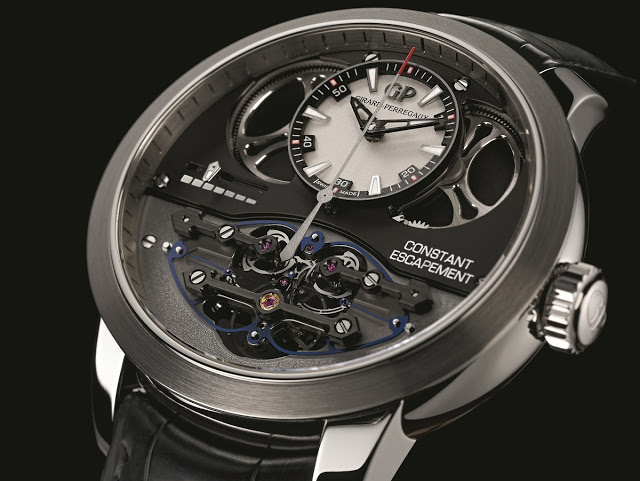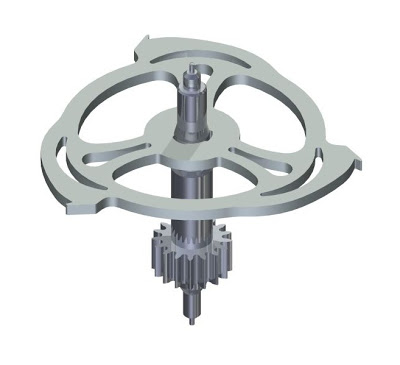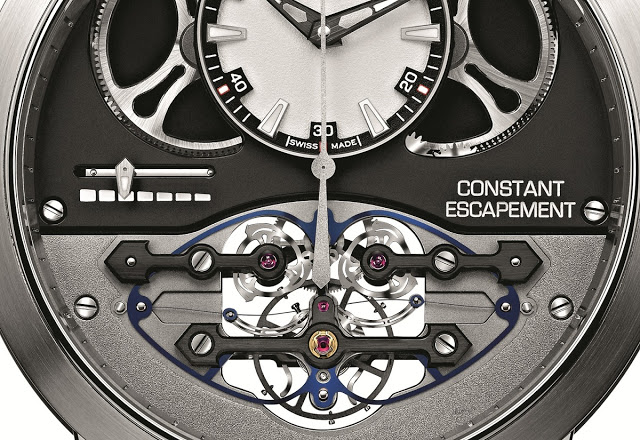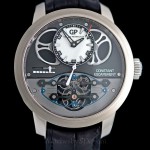Explaining the innovative and long-awaited Girard-Perregaux Constant Escapement

First mooted several years ago, the Girard-Perregaux Constant Escapement has finally arrived. Though it appears inordinately complicated, the GP Constant Escapement actually works on a fairly simple principle thanks to a silicon blade.
.jpg)
A miniscule blade of silicon, inside the buttterfly-shaped silicon frame is linked to the escape lever. As the escape wheel locks and unlocks, the silicon blade flexes, with each side of the blade buckling in the opposite direction. Because silicon is hard, the blade will tend to buckle in the opposite direction once it has reached its maximum deformation.
.jpg) |
| The silicon blade and frame in purple |
| A schematic of the silicon blade and frame |
Because the silicon blade delivers a constant impulse each time it buckles in opposite directions, the escapement has constant forces regardless of the barrel torque. And that is how the escapement achieves constant force, via the physical properties of the silicon blade.
.jpg) |
| The silicon blade up close |
In addition to the silicon blade for the escape lever, the escapement also has twin escape wheels, each providing an impulse as the blade buckles in one direction.
 |
| The escape wheel |
In a nod to its history the new escapement has three arrow-shaped bridges modelled after the brand’s iconic Three Gold Bridges Tourbillon: one bridge for the balance and one each for each escape wheel. These are the most obvious classical elements in a modern looking movement with black PVD coated bridges.

And the movement also has twin barrels, each with two stacked mainsprings, for a total of four mainsprings. This gives it a power reserve of about seven days, which is indicated on a linear power reserve at nine o’clock.
.jpg) |
| Twin stacked mainsprings inside the barrel |
This runs at 21,600 bph, which is the natural frequency of the silicon blade. The case is white gold and 48 mm in diameter. The Constant Escapement will retail for about CHF100,000. – SJX
.jpg)
.jpg)








